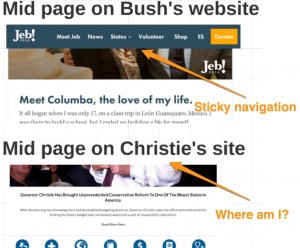August 20, 2016

The internet gives small businesses a huge opportunity to sell internationally. We explore the best international and multilingual SEO strategies in order to embrace this opportunity.
A ‘small international business’ is an oxymoron that is increasingly common. It used to be impossible for a small business to reach an international audience – a baker could only sell bread locally and a doctor could only treat local patients, however for many industries the technological revolution has completely changed this.
As communication, travel and transportation all developed in the latter half of the 20th Century, it started to be possible to reach a wider audience. It is the internet, however, that has really revolutionized small businesses, allowing them to develop an international clientele without needing more than a single base of operations, be it an office, shop, clinic or factory.
The internet gives small businesses huge potential. You can show your products to visitors anywhere in the world, play videos to them, interact on live chat, let them download brochures, read or listen to client testimonials and complete a huge range of marketing tasks that former multinational companies would never have even dreamed of.
Even if you provide a service that requires you to meet in person, for instance if you’re a doctor or a wedding minister, if you offer something exceptional at a competitive price, your clients may travel internationally to see you.
For other industries, including the sale of pretty much every product imaginable, you may already be competing internationally whether you realize it or not. Before ordering a product online, roughly 3 in 4 visitors shop around and more and more this includes international comparisons. Visitors will check the price on Amazon US, taking postage into account, before ordering from Amazon UK, for example.
What is the best international marketing strategy?
The first thing to realize is that to succeed internationally, you need to offer either something truly outstanding or something competitively priced. Businesses that focus on a small niche tend to excel in that niche and are more likely to succeed than a business that tries to do everything. Even Amazon started off selling books, before it broadened its product offering. Had it started trying to sell everything, it’s unlikely that it would have been so successful.
By translating your site and creating a multi-language website (or several separate sites) with good SEO, you actually reduce the competition. If you create a French language site, for example, it’s less likely that visitors in France will do a price comparison with the USA. You therefore widen your potential market, while simultaneously reducing the competition.

Whether you choose one or multiple websites is as much a question of SEO as user-experience (UX). You need to create a positive user-experience for your target audience as this will improve the following 5 SEO factors:
- The conversion rate, which is the end goal of any SEO campaign.
- The Click Through Rate (CTR, the % of people who see your link in the search results and click it).
- The time visitors spend on your site.
- The bounce rate (by reducing the visitors who leave your site for a competing site).
- The number of visitors who share, like or link to your content.
Whether directly or indirectly Google measure ALL of the above factors and take them into account for SEO. If one website is enough, that’s great, however if you feel two (or more) sites are necessary for a positive user-experience, then so be it.
If you’re not sure, then if you have a single language website targeting international customers (e.g. English speakers in the UK, USA and Canada) and offer the same or a similar range of products in each country, then you’re best having a single website and using cookies to control the currency. Google values unique content and this way you can focus on writing great content once, rather than trying to write the same thing in a different way for each territory.
An exception to this rule is where your core product is spelt differently in UK English and US English (e.g. jewelry and jewellery) or if your keyword research suggests that a completely different word is actually used (e.g. cookie sheet and baking tray). In this situation, or in situations where there are large differences in products shown, or the information you need to provide in each country (e.g. an accountancy website that needs to show regional information), you’re better off having separate websites, or separate sub-domains for each country.
When considering which option to go for, keep in mind that having a single website also gives you the benefit that links to it from various countries all help each other. Building relevant language specific links is an essential part of international SEO / content marketing as quality links are just as important as quality content.
SEO for a multi-language website
The logical first step when going multilingual is to translate your site, however this raises numerous questions:
- Should I keep my existing website or create a new one?
- Which CMS is best for me?
- Should I use multiple websites or sub-domains?
If you’re targeting a single language, the best strategy is normally to use a single international domain (e.g. .com, .net or .org). For multilingual SEO it depends on a range of factors and you can answer a few quick questions using the questionnaire from the French SEO Team to decide which strategy is best for you.
If you’ve already implemented one strategy but are now considering that another one might work better, then you can change the setup, or even your domain name, provided that you 301 Redirect each page on your old website to the equivalent page on the new one. Google have recently changed their policy and now pass 100% of the benefit of any links going from a page that is 301 redirected, therefore the link benefit from your organic SEO won’t be impacted by changing your domain name. See this post for news on this, or read the 301 redirect guide on Business 2 Community for how to configure them.
Should I use an automatic or manual translation?
If it’s going to appear on your website, use a manual translation, it’s that simple. If you don’t Google may consider your site to be spam and your readers will too. In one project when we replaced an automatic translation with a manual translation the Page Visit Duration increased by 50%. That alone shows that site visitors are put off by bad translations!
If you think automatic translations are good enough, then I recommend using IMTranslator.net. This lets you translate to another language, then automatically translates content back again. Look at the ‘Back Translation’ for the English to French translation shown below if you need more encouragement.

In Conclusion
In conclusion, today small businesses have a unique potential to reach a global audience.
As technology develops, the internet continues to accelerate, automated translations improve and transport becomes faster and cheaper with self-drive vehicles just around the corner, embracing the opportunity that international SEO provides is a great step for your business. Start by ensuring you have an exceptional product or service and implement your expansion with the same attention to quality – quality keyword research, quality content and quality links.
Doing so will see your business expand rapidly to your new market. Enjoy the journey!
Digital & Social Articles on Business 2 Community(34)







